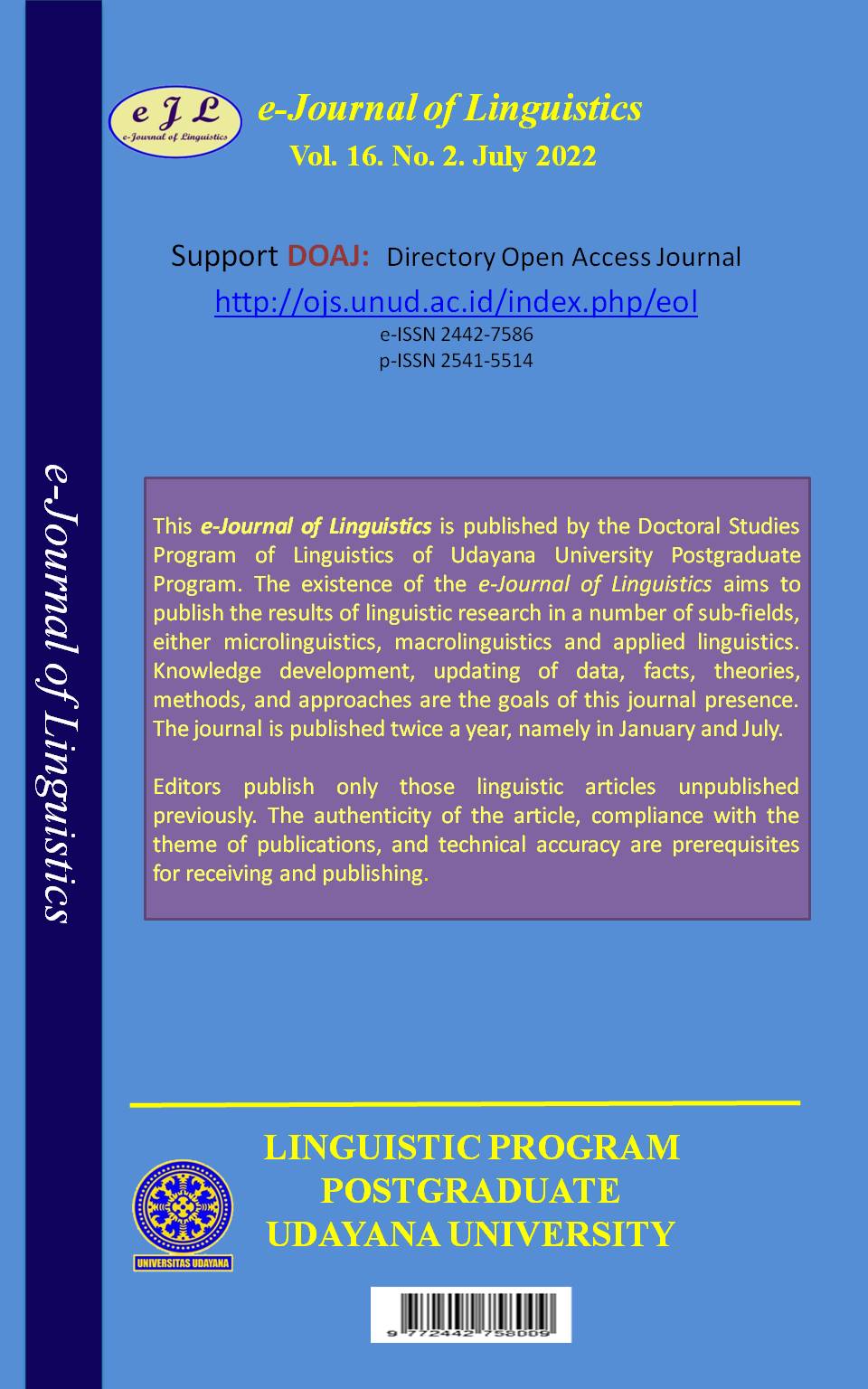en
Abstrak
This study aims to determine the method and type of self-corrections done by two professional translators in translating texts from English into bahasa Indonesia. This research used a descriptive qualitative method. The data were the recording of translating advertisement texts from English into bahasa Indonesia process using Translog II and Camtasia Studio 8. The findings are (1) Meaning Correction is the most frequent type of self-correction with the frequency of 36.2%; (2) Return Correction is never used by the professional translators; (3) The professional translators apply the multidirectional method in doing self-corrections. Finally, it can be concluded that self-correction is the crucial part that the translator should not skip in producing a better quality translation. This research also proves that translators cannot rely entirely on Google Translate as it cannot ultimately deliver the meaning from the source text (ST) into the target text (TT). Consequently, the translation provided by Google Translate needs to be revised.
##plugins.generic.usageStats.downloads##
Referensi
Carl, M., & Kay, M. (2011). Gazing and typing activities during translation: A comparative study of translation units of professional and student translators. Meta: Translators’ Journal, 56(4), 952-975.
Catford, J. C. (1965). A linguistic theory of translation. Oxford: Oxford University.
Jakobsen, A. L., & Schou, L. (1999). Translog documentation. In G. Hansen (Ed.), Probing the process in translation: Methods and results (pp. 149-184). Copenhagen: Samfundslitteratur.
Kevin. (2017). Dampak swa-koreksi pada proses terjemahan Mandarin-Indonesia seni pertunjukan komedi Tiongkok Xiangsheng (Unpublished Bachelor Thesis). Medan: Universitas Sumatera Utara.
Kourouni, K. (2012). Translating under time constraints in an undergraduate context: A study of students’ products, processes and learning styles (Unpublished Doctoral Thesis). Tarragona: Universitat Rovira I Virgili.
Kunzli, A. (2006). Translation revision - A study of the performance of ten professional translators revising a technical text. In M. Gotti & S. Sarcevic (Eds.), Insights into specialized translation (pp. 195-214). Bern/Frankfurt: Peter Lang.
Malkiel, B. (2009). From Antonia to my Antonia: Tracking self-corrections with Translog. In S. Göpferich, A. L. Jakobsen & I. M. Mees (Eds.), Behind the mind: Methods, models, and results in translation process research (pp. 149-166). Copenhagen: Samfundslitteratur Press.
Mossop, B. (2001). Revising and editing for translators. Manchester, UK; Northampton, MA: St. Jerome.
Muchtar, M. (2013). Translation: Theory, practice, and study. Medan: Bartong Jaya.
Nababan, M. R. (1999). Teori menerjemah bahasa Inggris. Pustaka Pelajar.
Newmark, P. (1988). A textbook of translation (Vol. 66). New York: Prentice-Hall.
Robert, I. (2008). Translation revision procedures: An explorative study. In P. Boulogne (Ed.), Translation and Its Others: Selected Papers of the CETRA Research Seminar in Translation Studies 2007, pp. 1-22.
Rosa, R. N. (2017). An analysis on translation and translating: SFL language metafunctions in the translation of student and professional translators (Unpublished Doctoral Dissertation). Medan: Universitas Sumatera Utara.
Sofyan, R. (2016). Translation process and translation quality: A study of Indonesian student translators (Unpublished Doctoral Dissertation). Medan: Universitas Sumatera Utara
Sofyan, R., & Rosa, R. N. (2015). Using Translog to investigate self-corrections in translation: A pilot study in translation process. Proceedings of the 15th International Conference on Translation (ICT15), pp. 500-508
Sofyan, R., & Rosa, R. N. (2020). Kajian terjemahan: Panduan praktik dan penelitian terjemahan. Tangerang: Mahara Publishing.

This work is licensed under a Creative Commons Attribution 4.0 International License




